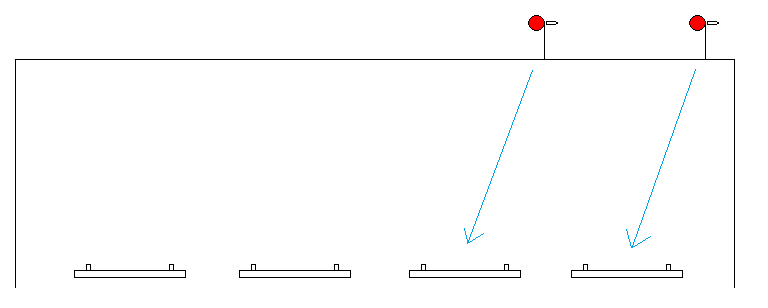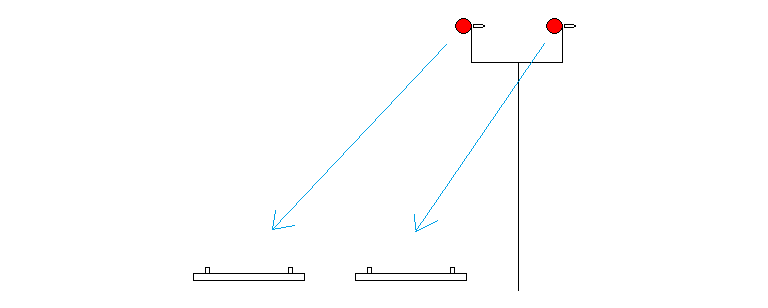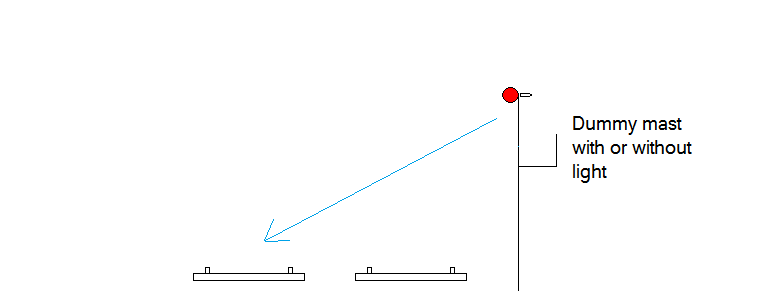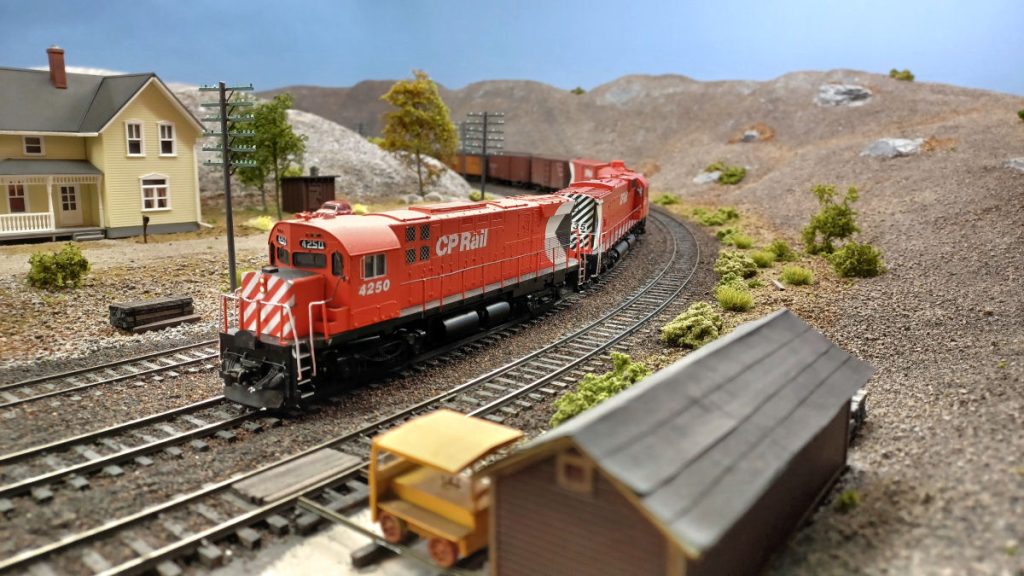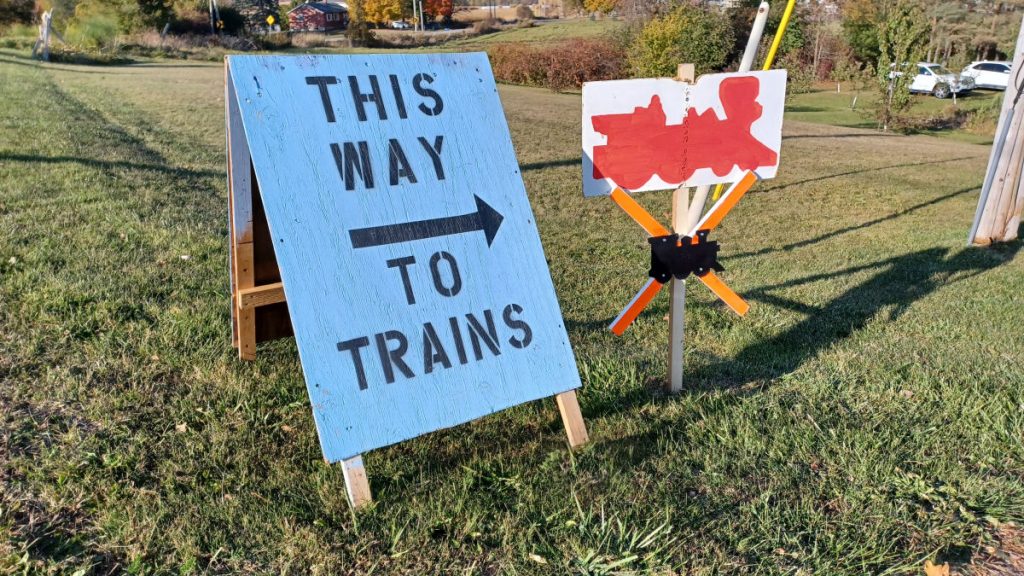GENERAL DESCRIPTION AND LOCATION OF SIGNALS
246. Whenever practicable, train order signals will be located adjacent to the train order office to which they apply, and other fixed signals, except switches, will be located to the right of the track which they govern. Where conditions require other locations they will indicated in special instructions.
247. When bridge, bracket or cantilever structures are used, signals will be located with respect to the tracks on which they affect movements as shown in Figures 1, 2 and 3. One or more dummy masts, as in Figure 3, indicates that there are one or more tracks between the active signal and the track on which it affects movements.
248. Indications of fixed signals of the semaphore and colour light types are shown by the position of the semaphore arm, colour of lights, flashing of lights, or any combination thereof. They may be qualified by letter plate, marker, shape of semaphore arms, or any combination thereof.
Semaphore type signals display their indications by arm, or arms, to the right of the signal mast and in addition, by night, display lights of the prescribed colour as viewed from an approaching train.
Colour light type signals display their indications by lights of prescribed colour or flashing of such lights as viewed from an approaching train.

